
Catherine Rosalind Russell was an American actress, comedian, screenwriter, and singer, known for her role as fast-talking newspaper reporter Hildy Johnson in the Howard Hawks screwball comedy His Girl Friday (1940), opposite Cary Grant, as well as for her portrayals of Mame Dennis in Auntie Mame (1958) and Rose in Gypsy (1962). A noted comedienne, she won all five Golden Globes for which she was nominated. Russell won the Tony Award for Best Actress in a Musical in 1953 for her portrayal of Ruth in the Broadway show Wonderful Town. She was nominated for the Academy Award for Best Actress four times during her career before being awarded a Jean Hersholt Humanitarian Award in 1973.

Susan Hayward was an Academy Award-winning American film actress, best known for her film portrayals of women that were based on true stories.
3D films are motion pictures made to give an illusion of three-dimensional solidity, usually with the help of special glasses worn by viewers. They have existed in some form since 1915, but had been largely relegated to a niche in the motion picture industry because of the costly hardware and processes required to produce and display a 3D film, and the lack of a standardized format for all segments of the entertainment business. Nonetheless, 3D films were prominently featured in the 1950s in American cinema, and later experienced a worldwide resurgence in the 1980s and 1990s driven by IMAX high-end theaters and Disney-themed venues. 3D films became increasingly successful throughout the 2000s, peaking with the success of 3D presentations of Avatar in December 2009, after which 3D films again decreased in popularity. Certain directors have also taken more experimental approaches to 3D filmmaking, most notably celebrated auteur Jean-Luc Godard in his film Goodbye to Language.

William Harrison Hays Sr. was an American politician, and member of the Republican Party. As chairman of the Republican National Committee from 1918–1921, Hays managed the successful 1920 presidential campaign of Warren G. Harding. Harding then appointed Hays to his cabinet as his first Postmaster General. He resigned from the cabinet in 1922 to become the first chairman of the Motion Picture Producers and Distributors of America. As chairman, Hays oversaw the promulgation of the Motion Picture Production Code, which spelled out a set of moral guidelines for the self-censorship of content in American cinema.

Ernestine Jane Geraldine Russell was an American actress. She was one of Hollywood's leading sex symbols in the 1940s and 1950s. She starred in more than 20 films.

The Narrow Margin is a 1952 American film noir starring Charles McGraw and Marie Windsor. Directed by Richard Fleischer, the RKO picture was written by Earl Felton, based on an unpublished story written by Martin Goldsmith and Jack Leonard. The screenplay by Earl Felton was nominated for an Academy Award.

Jane Greer was an American film and television actress best known for her role as femme fatale Kathie Moffat in the 1947 film noir Out of the Past. In 2009, The Guardian named her one of the best actors never to have received an Academy Award nomination.
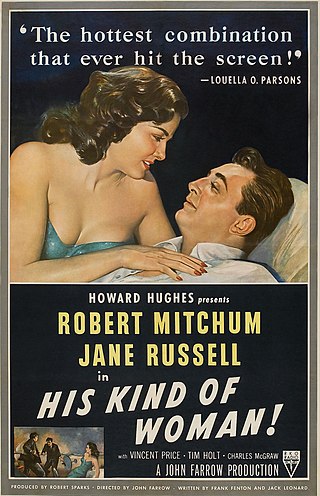
His Kind of Woman is a 1951 film noir starring Robert Mitchum and Jane Russell. The film features supporting performances by Vincent Price, Raymond Burr and Charles McGraw. The direction of the film, which was based on the unpublished story "Star Sapphire" by Gerald Drayson, is credited to John Farrow.
Linwood G. Dunn, A.S.C. was an American pioneer of visual special effects in motion pictures and an inventor of related technology. Dunn worked on many films and television series, including the original 1933 King Kong (1933), Citizen Kane (1941), and Star Trek (1966–69).

The Las Vegas Story is a 1952 American suspense film noir starring Jane Russell and Victor Mature, directed by Robert Stevenson and produced by Robert Sparks and Howard Hughes with Samuel Bischoff as the executive producer.
Joseph Ignatius Breen was an American film censor with the Motion Picture Producers and Distributors of America who applied the Hays Code to film production.
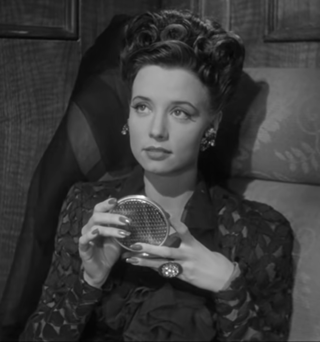
Renee Godfrey was an American stage and motion picture actress and singer.
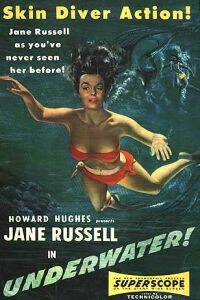
Underwater! is a 1955 adventure film directed by John Sturges and starring Jane Russell and Richard Egan.
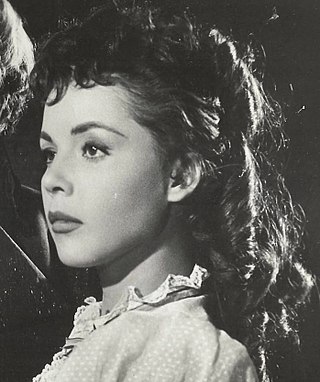
Colleen Joy Miller is an American actress. She starred in several films, such as the Westerns Gunfight at Comanche Creek (1963) and Four Guns to the Border (1954).
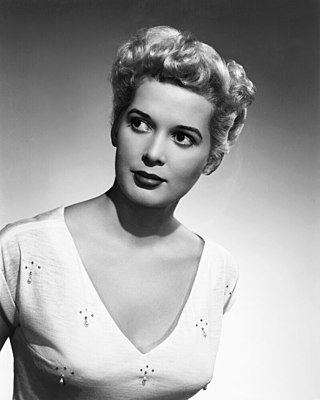
Beverly Eileen Michaels was an American B-movie actress and cheesecake model of the 1950s.

Film censorship in the United States was a frequent feature of the industry almost from the beginning of the U.S. motion picture industry until the end of strong self-regulation in 1966. Court rulings in the 1950s and 1960s severely constrained government censorship, though statewide regulation lasted until at least the 1980s.

RKO Radio Pictures Inc., commonly known as RKO Pictures or simply RKO, was an American film production and distribution company, one of the "Big Five" film studios of Hollywood's Golden Age. The business was formed after the Keith-Albee-Orpheum theater chain and Joseph P. Kennedy's Film Booking Offices of America studio were brought together under the control of the Radio Corporation of America (RCA) in October 1928. RCA executive David Sarnoff engineered the merger to create a market for the company's sound-on-film technology, RCA Photophone, and in early 1929 production began under the RKO name. Two years later, another Kennedy concern, the Pathé studio, was folded into the operation. By the mid-1940s, RKO was controlled by investor Floyd Odlum.

Myrna Dell was an American actress, model, and writer who appeared in numerous motion pictures and television programs over four decades. A Hollywood glamour girl in the early part of her career, she is best known today for her work in B-pictures, particularly film noir thrillers and Westerns.
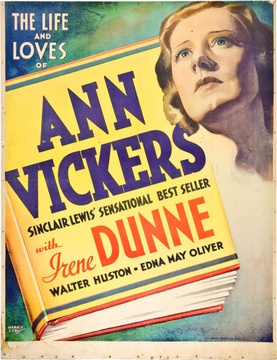
Ann Vickers is a 1933 American pre-Code romantic drama directed by John Cromwell and starring Irene Dunne and Walter Huston. It is based on the novel of the same name by Sinclair Lewis.

Girl of the Port is a 1930 pre-Code melodramatic adventure/romance American film directed by Bert Glennon. The screenplay was written by Beulah Marie Dix and Frank Reicher based on the short story "The Fire-walker" by John Russell. The film stars Sally O'Neil, Reginald Sharland, Mitchell Lewis and Duke Kahanamoku.

















